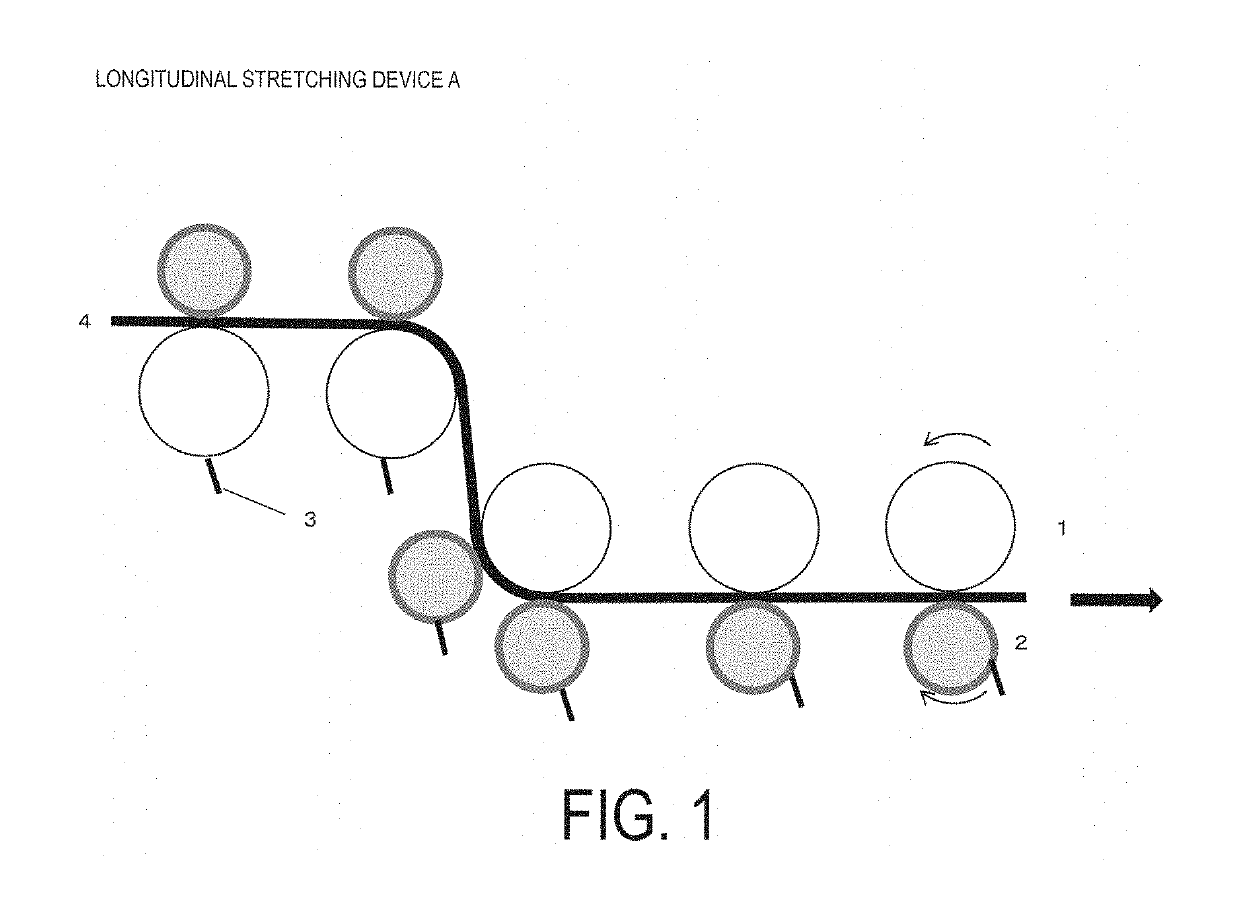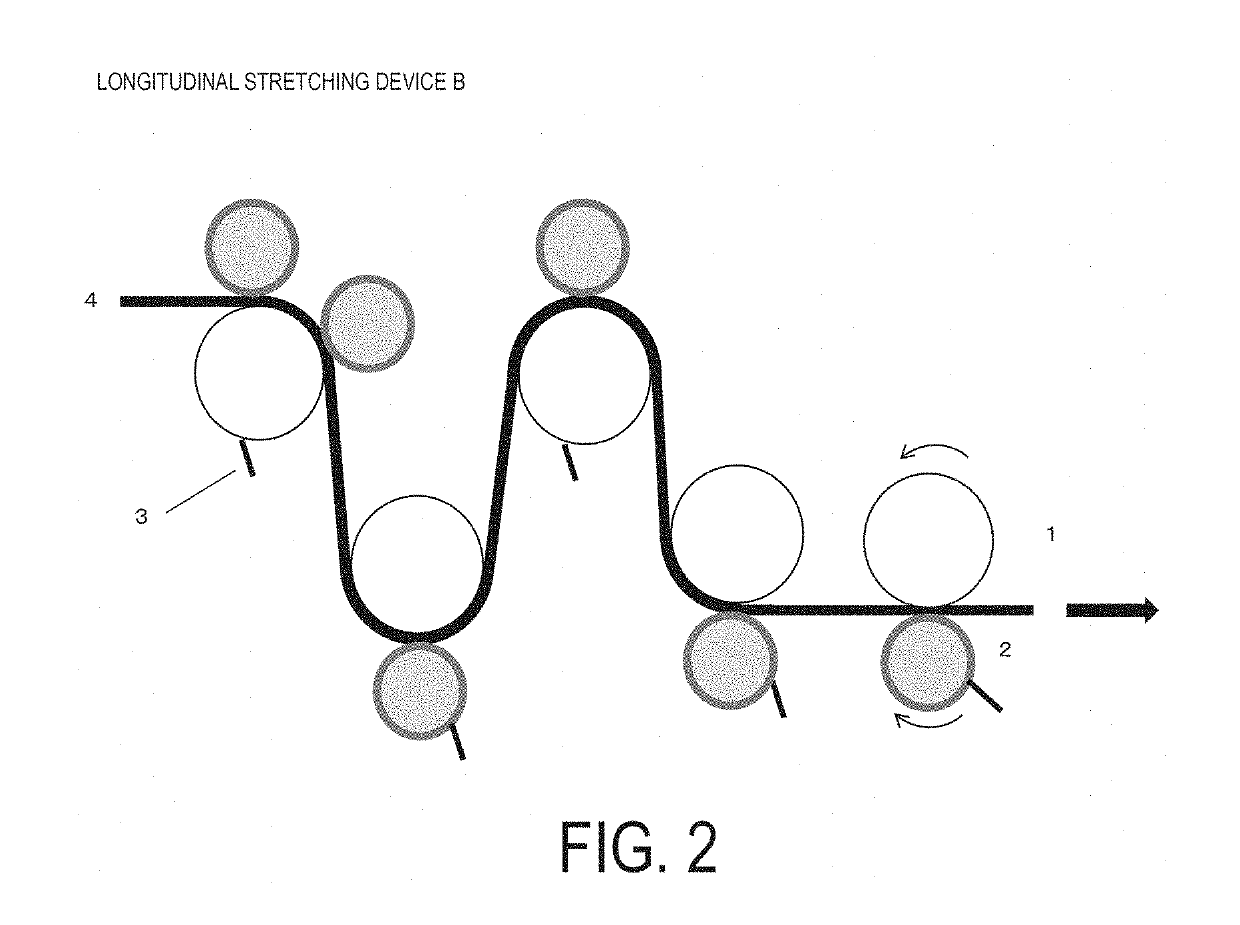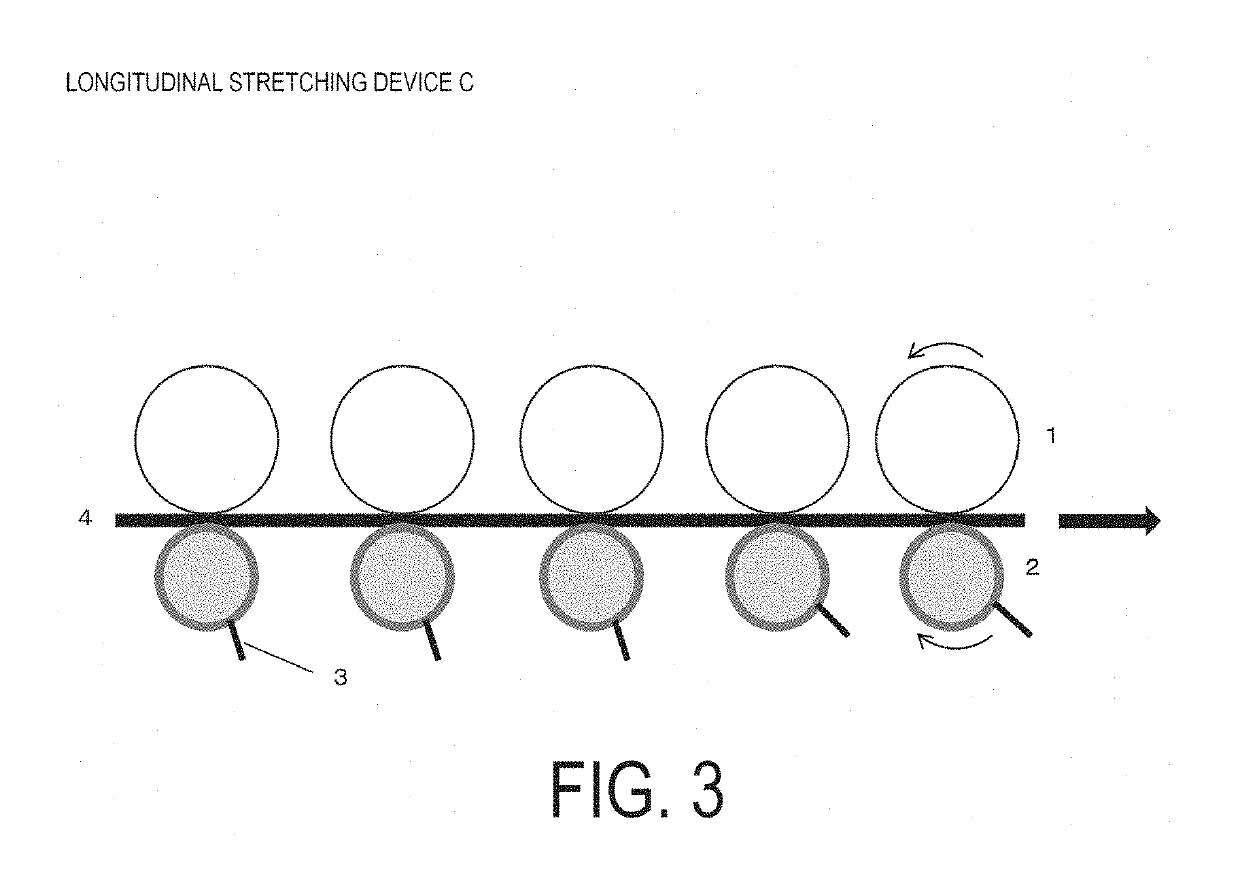Laminated polyolefin microporous membrane, battery separator, and production method thereof
a technology of microporous membrane and laminated polyolefin, which is applied in the direction of cell components, final product manufacturing, sustainable manufacturing/processing, etc., can solve the problems of high cost, number of electrode turns, and thin portions which are not thick enough to impart adequate functionality, etc., to achieve excellent shutdown characteristics, increase the capacity of a battery, and uniform thickness of the porous layer
- Summary
- Abstract
- Description
- Claims
- Application Information
AI Technical Summary
Benefits of technology
Problems solved by technology
Method used
Image
Examples
reference example 1
[0236]A polyvinyl alcohol (average degree of polymerization: 1700, degree of saponification: not less than 99%) serving as a binder, alumina particles having an average particle size of 0.5 μm serving as inorganic particles, and ion-exchanged water were compounded at a weight ratio of 6:54:40, sufficiently stirred, and uniformly dispersed. Next, the solution was filtered with a filter having a filtration limit of 5 μm to obtain a coating solution (a).
reference example 2
[0237]A copolymer of a polyvinyl alcohol, acrylic acid, and methyl methacrylate (“POVACOAT” (trade mark), manufactured by Nissin Kasei Co., Ltd.) serving as a binder, alumina particles having an average particle size of 0.5 μm serving as inorganic particles, and a solvent (ion-exchanged water:ethanol=70:30) were compounded at a weight ratio of 5:45:50, sufficiently stirred, and uniformly dispersed. Next, the solution was filtered with a filter having a filtration limit of 5 μm to obtain a coating solution (b).
reference example 3
[0238]An aqueous emulsion of a polyvinylidene fluoride resin (VINYCOAT PVDF AQ360, manufactured by Higashi Nippon Toryo Co., Ltd.) serving as a binder, alumina particles having an average particle size of 0.5 μm serving as inorganic particles, and ion-exchanged water were compounded at a weight ratio of 30:30:40, sufficiently stirred, and uniformly dispersed. Next, the solution was filtered with a filter having a filtration limit of 5 μm to obtain a coating solution (c).
Production of Laminated Polyolefin Microporous Membrane
PUM
| Property | Measurement | Unit |
|---|---|---|
| melting point | aaaaa | aaaaa |
| melting point | aaaaa | aaaaa |
| temperature | aaaaa | aaaaa |
Abstract
Description
Claims
Application Information
 Login to View More
Login to View More - R&D
- Intellectual Property
- Life Sciences
- Materials
- Tech Scout
- Unparalleled Data Quality
- Higher Quality Content
- 60% Fewer Hallucinations
Browse by: Latest US Patents, China's latest patents, Technical Efficacy Thesaurus, Application Domain, Technology Topic, Popular Technical Reports.
© 2025 PatSnap. All rights reserved.Legal|Privacy policy|Modern Slavery Act Transparency Statement|Sitemap|About US| Contact US: help@patsnap.com



